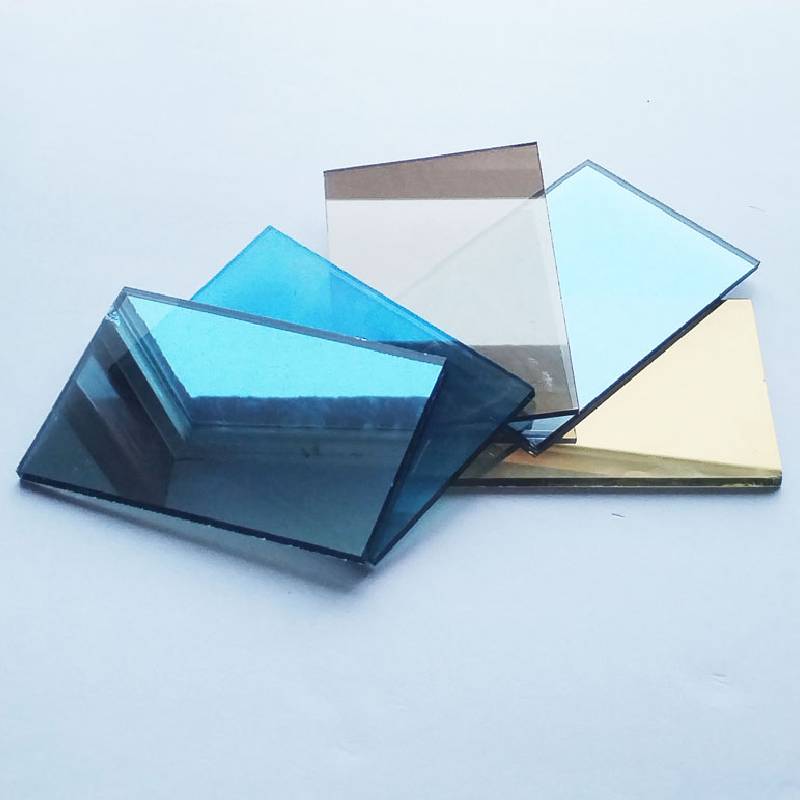The Allure of Architectural Colored Glass
Architectural colored glass has increasingly become a significant feature in modern design, blending aesthetic appeal with functionality. This unique material has a rich history and plays a critical role in shaping spaces, adding vibrancy and character to buildings, while also enhancing their structural capabilities.
Colored glass has been utilized for centuries, tracing back to ancient civilizations that employed it in their cathedrals and temples. The use of stained glass in medieval churches is one of the most notable examples, where artisans transformed simple materials into intricate artworks that not only illuminated sacred spaces but also conveyed biblical stories to the largely illiterate populace of the time. Today, architects and designers continue to draw inspiration from this tradition, employing colored glass in contemporary settings to create stunning visual effects and emotional responses.
One key advantage of architectural colored glass is its ability to interact with light. When sunlight passes through colored glass, it refracts and scatters, creating a dazzling display of colors that can change throughout the day. This dynamic quality adds a layer of depth and intrigue to a building, transforming interiors with shifting hues that can evoke different moods and atmospheres. For instance, a conference room with colored glass walls can promote creativity and innovation, while residential spaces can glow warmly in the evening light, inviting comfort and relaxation.
Beyond aesthetics, architectural colored glass also provides practical benefits. It can be engineered to meet various energy efficiency standards, enhancing building performance by controlling heat gain and glare while allowing natural light to filter through. Many modern colored glasses are also designed to provide insulation, helping to reduce energy costs and improve occupant comfort. In this way, the integration of colored glass serves both artistic and practical purposes, making it a smart choice for eco-conscious design.
architectural colored glass
Moreover, colored glass can significantly influence a building’s identity and branding. For commercial spaces, the choice of colored glass can reflect a brand’s values and ethos. For example, a tech company might opt for sleek blue or green glass to convey innovation and sustainability, while a creative firm might favor more vibrant hues that express artistic flair. As such, colored glass not only enhances visual appeal but also plays a pivotal role in communicating the essence of a space.
The versatility of architectural colored glass is noteworthy, as it can be tailored to various applications. From large façade installations to smaller decorative elements, such as partitions and windows, colored glass can be customized in terms of color, texture, and opacity. Techniques like laminating, fritting, and printing allow for further personalization, enabling designers to achieve unique effects that align with their vision.
As we look towards the future, the use of architectural colored glass is likely to expand, as technological advancements continue to enhance its capabilities. Innovations in glass production and treatment processes will lead to even more durable and energy-efficient options. Furthermore, as sustainability becomes a focal point in architecture, the ability to harness natural light through colored glass will be paramount in designing buildings that are not only beautiful but also environmentally responsible.
In conclusion, architectural colored glass is more than just a decorative element; it is a powerful tool in the hands of architects and designers. Its ability to transform spaces through color, light, and texture makes it an indispensable component of modern architecture. As this medium continues to evolve, its impact on the built environment will undoubtedly inspire future generations to push the boundaries of design while honoring the rich legacy of colored glass in architecture.
 Afrikaans
Afrikaans  Albanian
Albanian  Amharic
Amharic  Arabic
Arabic  Armenian
Armenian  Azerbaijani
Azerbaijani  Basque
Basque  Belarusian
Belarusian  Bengali
Bengali  Bosnian
Bosnian  Bulgarian
Bulgarian  Catalan
Catalan  Cebuano
Cebuano  Corsican
Corsican  Croatian
Croatian  Czech
Czech  Danish
Danish  Dutch
Dutch  English
English  Esperanto
Esperanto  Estonian
Estonian  Finnish
Finnish  French
French  Frisian
Frisian  Galician
Galician  Georgian
Georgian  German
German  Greek
Greek  Gujarati
Gujarati  Haitian Creole
Haitian Creole  hausa
hausa  hawaiian
hawaiian  Hebrew
Hebrew  Hindi
Hindi  Miao
Miao  Hungarian
Hungarian  Icelandic
Icelandic  igbo
igbo  Indonesian
Indonesian  irish
irish  Italian
Italian  Japanese
Japanese  Javanese
Javanese  Kannada
Kannada  kazakh
kazakh  Khmer
Khmer  Rwandese
Rwandese  Korean
Korean  Kurdish
Kurdish  Kyrgyz
Kyrgyz  Lao
Lao  Latin
Latin  Latvian
Latvian  Lithuanian
Lithuanian  Luxembourgish
Luxembourgish  Macedonian
Macedonian  Malgashi
Malgashi  Malay
Malay  Malayalam
Malayalam  Maltese
Maltese  Maori
Maori  Marathi
Marathi  Mongolian
Mongolian  Myanmar
Myanmar  Nepali
Nepali  Norwegian
Norwegian  Norwegian
Norwegian  Occitan
Occitan  Pashto
Pashto  Persian
Persian  Polish
Polish  Portuguese
Portuguese  Punjabi
Punjabi  Romanian
Romanian  Russian
Russian  Samoan
Samoan  Scottish Gaelic
Scottish Gaelic  Serbian
Serbian  Sesotho
Sesotho  Shona
Shona  Sindhi
Sindhi  Sinhala
Sinhala  Slovak
Slovak  Slovenian
Slovenian  Somali
Somali  Spanish
Spanish  Sundanese
Sundanese  Swahili
Swahili  Swedish
Swedish  Tagalog
Tagalog  Tajik
Tajik  Tamil
Tamil  Tatar
Tatar  Telugu
Telugu  Thai
Thai  Turkish
Turkish  Turkmen
Turkmen  Ukrainian
Ukrainian  Urdu
Urdu  Uighur
Uighur  Uzbek
Uzbek  Vietnamese
Vietnamese  Welsh
Welsh  Bantu
Bantu  Yiddish
Yiddish  Yoruba
Yoruba  Zulu
Zulu 

